Curators Reformulate the Social Contract in Outdoor Exhibition
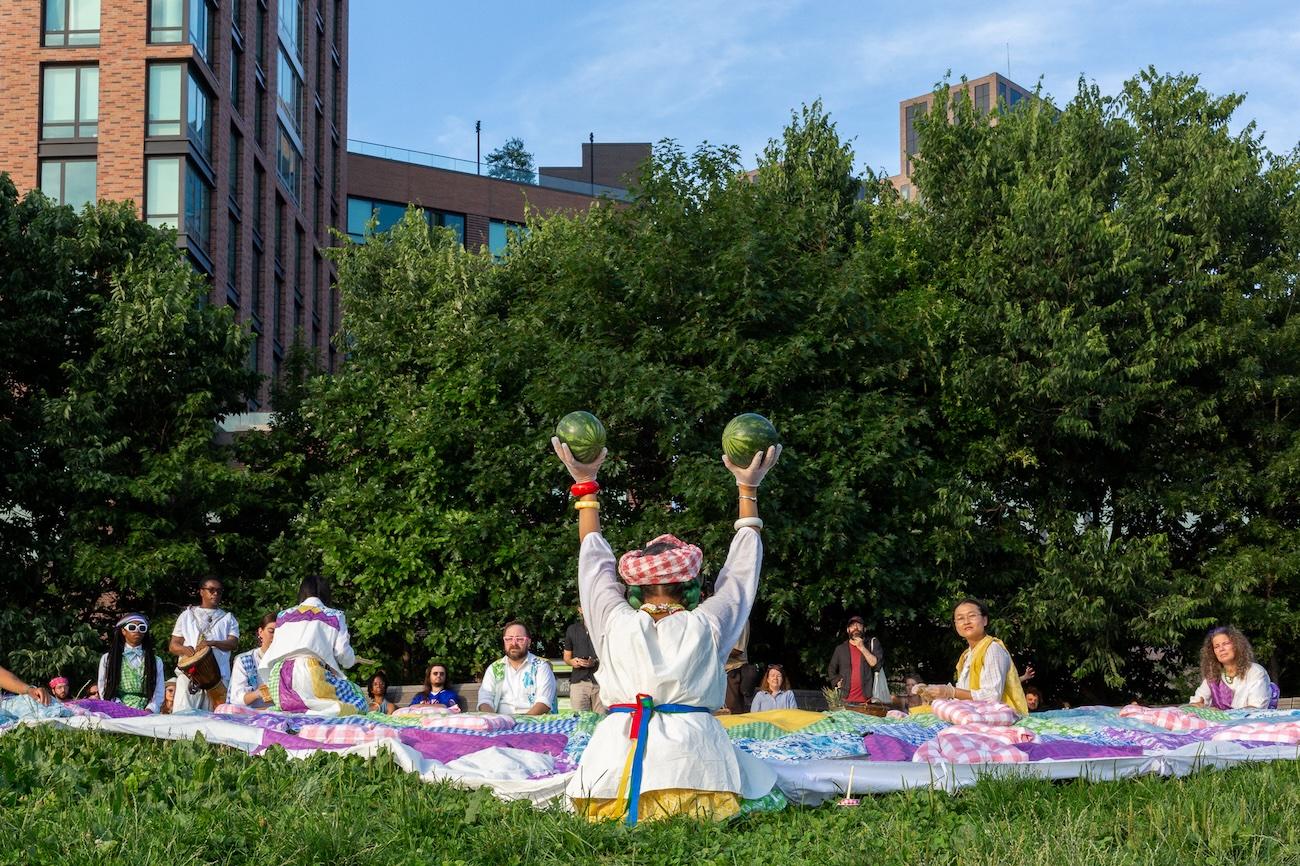
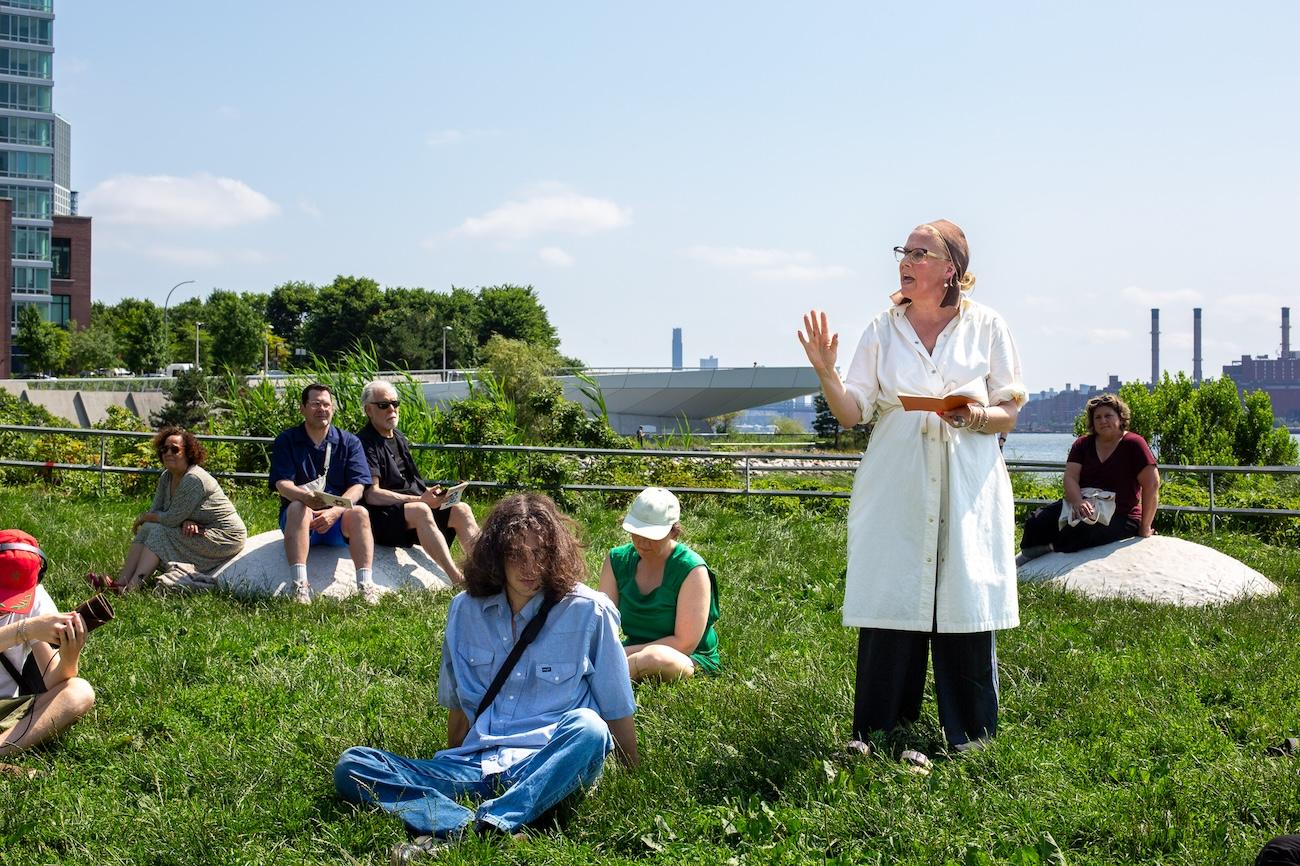
On a sunny Saturday afternoon at the close of Midsummer week in Hunter’s Point South Park, artists Carmen Baltzar, Kastehelmi Korpijaakko, Jodie Lyn-Kee-Chow, Jemila MacEwan, and Lotta Petronella presented performance-based works for the opening of Shared Grounds, an outdoor exhibition curated by the Finnish Cultural Institute’s director of programs Elina Suoyrjö and Flux Factory’s exhibitions director Meghana Karnik, and co-organized by the two institutions, with curatorial assistance from Rowena Hurme. Although each artist’s approach varied greatly, the formidable curatorial duo framed the social contract, a concept baked into the daily lives of all New Yorkers, as a salient thread—what do we owe each other, and our surroundings? I pondered when to take action and if it is even a possibility to remain still.
The performances unfolded at disparate points off the park path, while the sun made its way across an unforgivingly bright blue sky on its own path bound to set majestically behind the New York City skyline, rising above the East River buzzing with the vibrations of dozens of jet skis passing, helicopters whirring above, and the ever persistent hum of the city itself. The irony, of course, is that it is not the sun that travels, but us and the ground we stand on. Flux Factory’s new venue Flux IV is located at the park’s southern tip in Long Island City and the exhibition excavates the grounds’s deep sediment and sentiments, from the fraught colonial origins of the park’s namesake to the ongoing parleys and mediations surrounding more recent development there between contemporary parties—humans and nonhumans, not to mention, the land, air, and water.
Petronella’s sparrows & mystics began the soundtrack of the day with a chorus of chimes, bird calls, and a five-part score that paid homage to the house sparrow and Cristina Mirabilis, a 12th-century mystic who lived in a tree like a bird. In her contribution to the zine that accompanies the exhibition, Petronella writes:
This piece is about flying mystics, sparrows &
the things that are leaving us, going away, extinct
how do we keep (re)turning to
the water
the soil
the land
dreaming
to imagine all the things that we want to change
& all the things we are ready to destroy
Performing the piece with a choir cast of local residents, they encircled the onlooking audience, enveloping it in sound and narrative relating Mirabilis’s legacy to the plight of the increasingly endangered songbird.
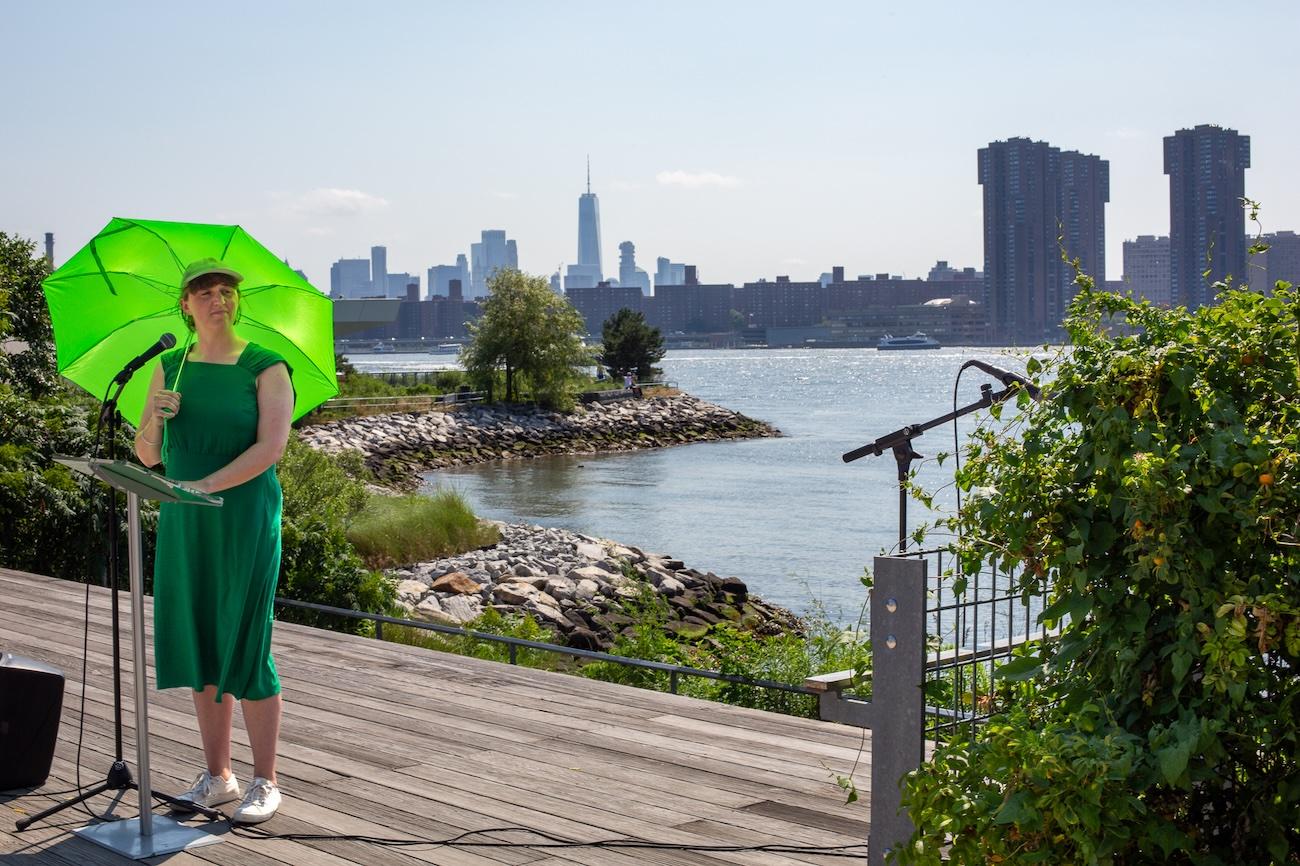
With imagination a core catalyst in conceptualizing our worlds, diplomacy also remains necessary in navigating the impulses to change (and to destroy) as we continually reassess contracts involved in sharing grounds—both in a physical and social sense of the term grounds. Korpijaakko’s Negotiation (an attempt) considered the complicated nuances of negotiation via a press conference with Rosa Rugosa Alba (a plant commonly known as Beach Rose) held in front of a salt marsh. Keeping with the feathered alliance ushered in by Petronella, the dialogue also mentioned the Canada geese observed along the shore behind the fence in the park. Highlighting this barrier, Korpijaakko noted the transgressive essence of negotiation:
When worlds and bodies are fully separated, someone has already negotiated for you or against you, the agreement is already set and signed. Something is protected, safeguarded, neglected, or fenced aside. Things still enter each other’s paths. A storm breaks a branch so aesthetically bending itself over a bench. A colony of ants eats its way through. Unintended plants appear in places without agreement.
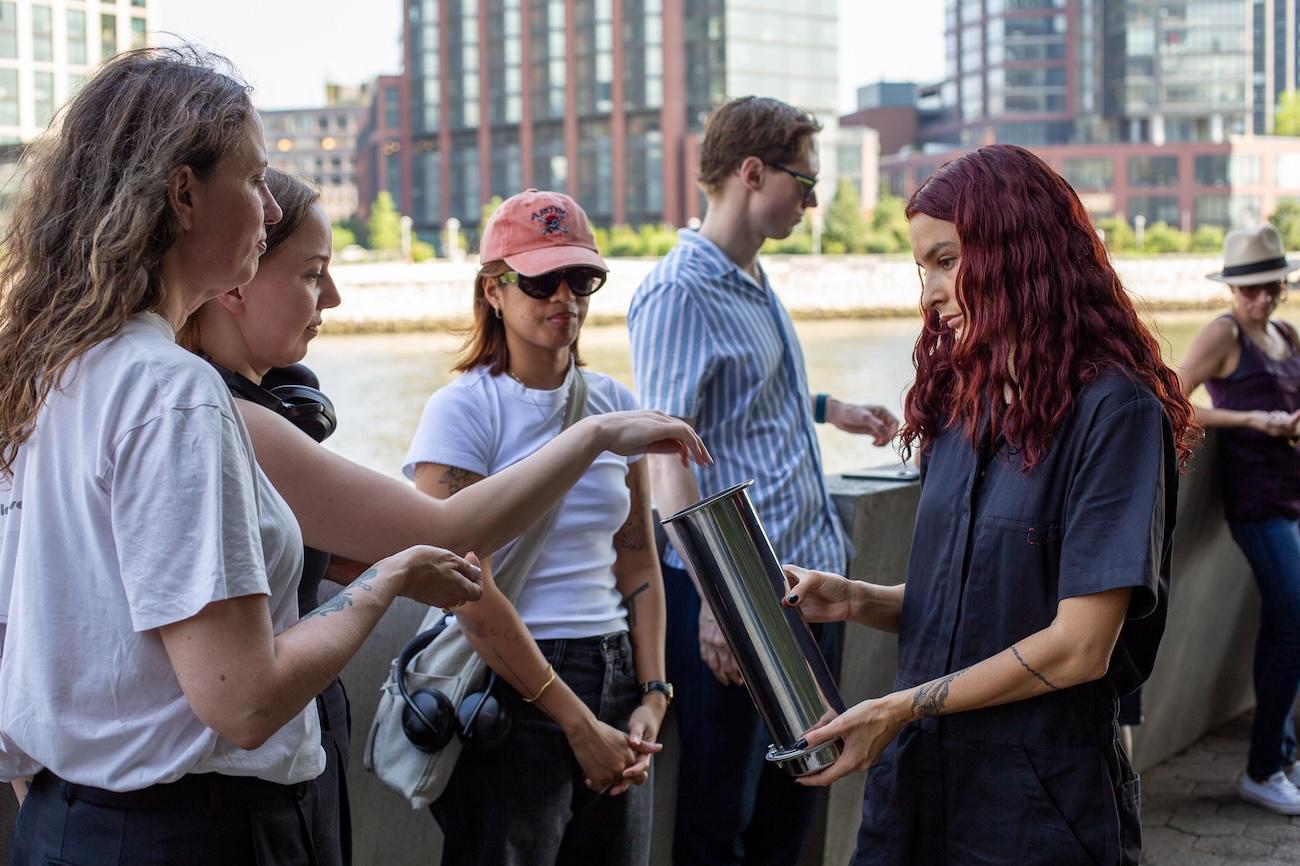
In nothing to be seen here (a closed practice) Baltzar asked audience members to place seeds in a time capsule along with a transcript of a conversation between a grandmother and her granddaughter left at the site in a planter behind Flux IV. Informed by Romani oral traditions, Balzar’s transcript emphasizes ancestral bonds, yet also looks to future inhabitants who may discover the narrative in the time capsule and the possibility of growth or the knowledge held within the seeds.
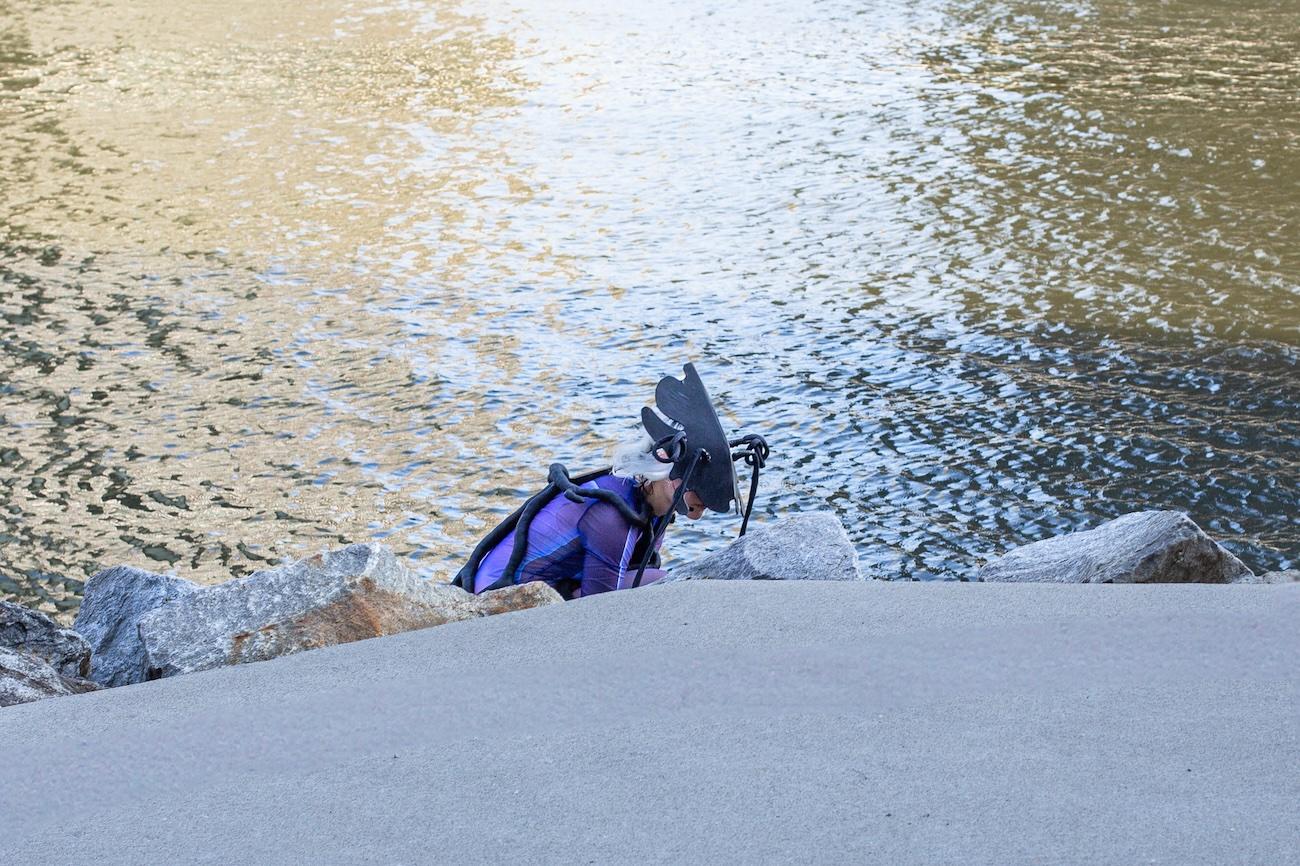
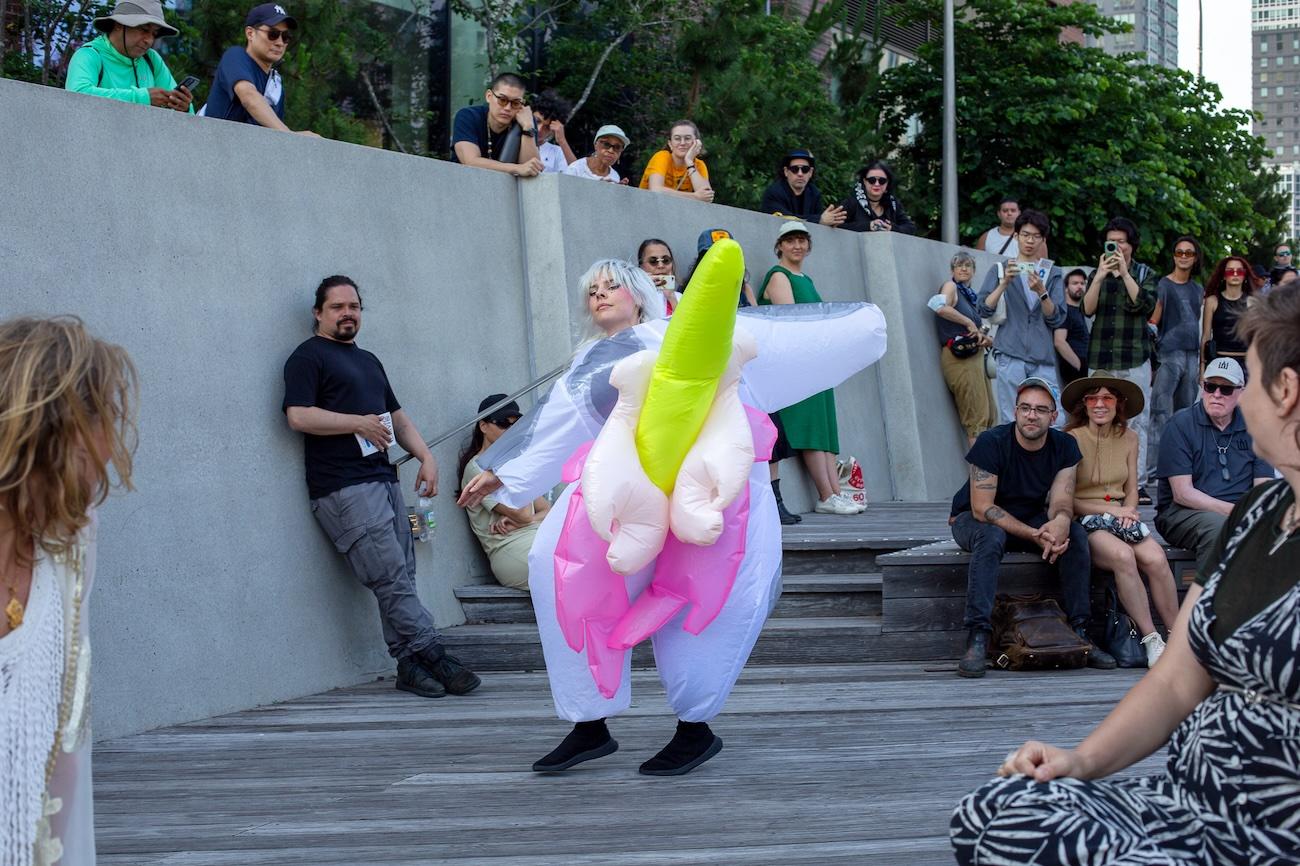
In their surreal work ZERO/THE BIRTH OF VENIS, MacEwan embodied a character based on a new species of bacteria recently discovered in the Newtown Creek watershed that surrounds the park, a direct result of the notable pollution of this waterway. MacEwan began the work by climbing over the rocks along the shoreline behind Flux IV, emerging as live electronic music from their collaborator, ExquisiteCorp, played. The artist channeled the mystery and tumult of the newly discovered bacterial life with magnetic movements in fantastical, metamorphosing costumes, culminating with MacEwan moving interactively through the crowded audience.
As Petronella opened the day in chorus, the final performance The Picnic: Harvest of the Soft Sweet Sound by Lyn-Kee-Chow closed out the day by the recurring choral call: ‘Soft Sweet Sound.’ The newest iteration of a series of picnic performances that the artist began over a decade ago, informed by her Jamaican and Chinese heritage, migration, food scarcity, and wellness, the performance series features Lyn-Kee-Chow in a dress that she made of vinyl picnic blankets that billow and extend in a giant radius around her. The artist selects each blanket for their colorful, patterned design, reminding her of the table coverings she would see in her grandmother’s kitchen growing up in Jamaica.
In this presentation, Lyn-Kee-Chow invited a group of collaborators to accompany her in a procession from Flux IV and into the Southern tip of the park, helping to carry the 40 x 40’ quilt attached to the artist’s torso, trailing behind her as she carried a basket of fruit atop of her head. Upon reaching their destination, Lyn-Kee-Chow and collaborators spread out the quilt, still attached to the artist, laid out over and extending from her lap, while she and a few collaborators chopped up whole pineapples, apples, and watermelons to serve audience members who were invited to join the group on the gigantic quilt.
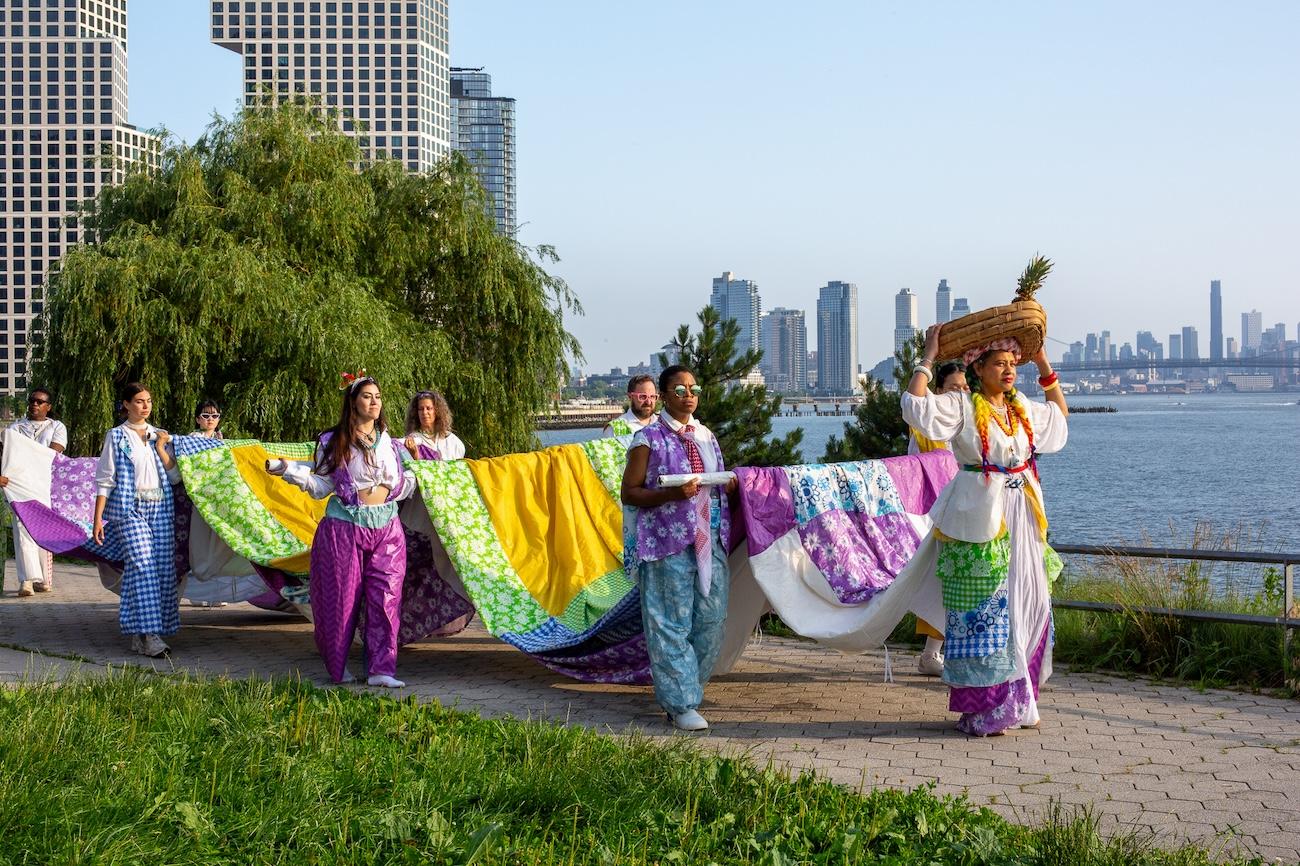
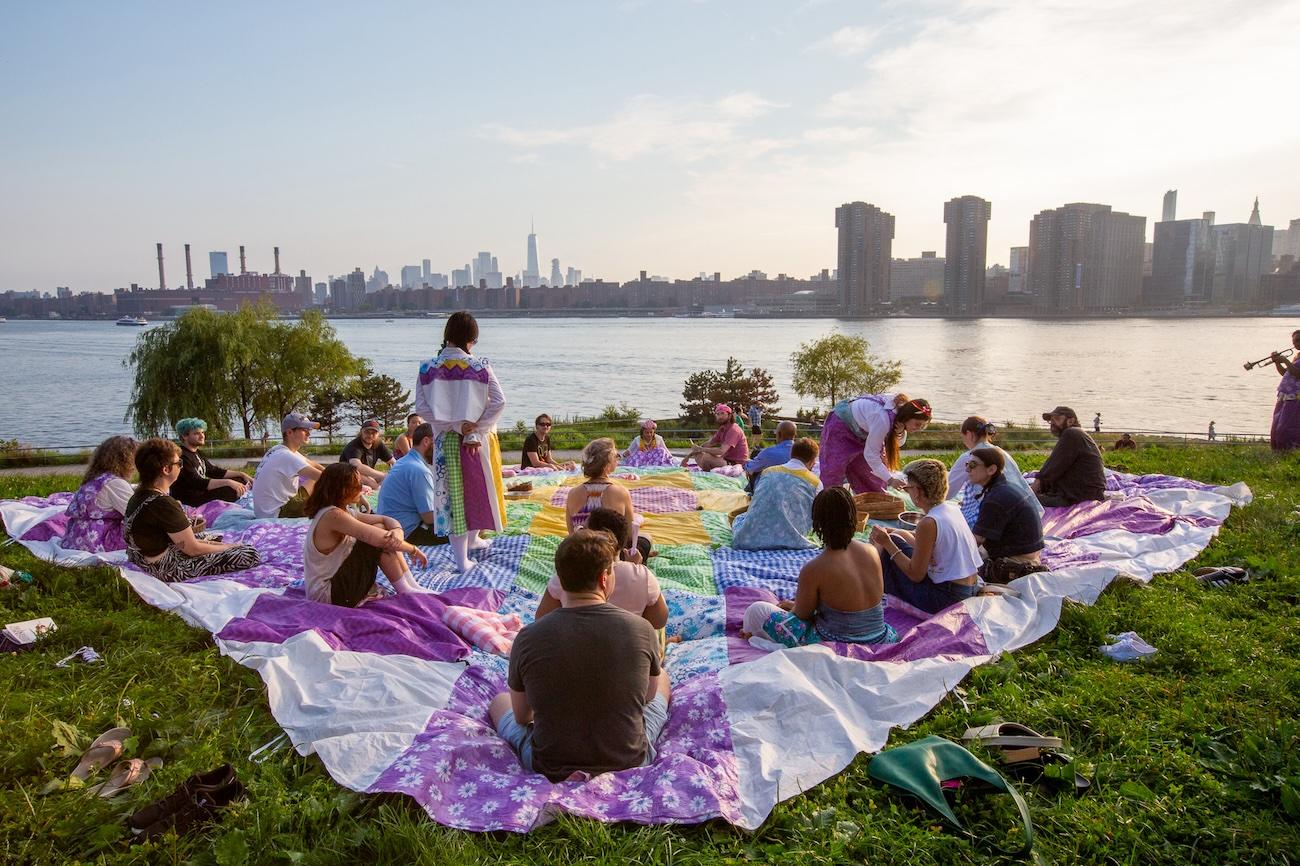
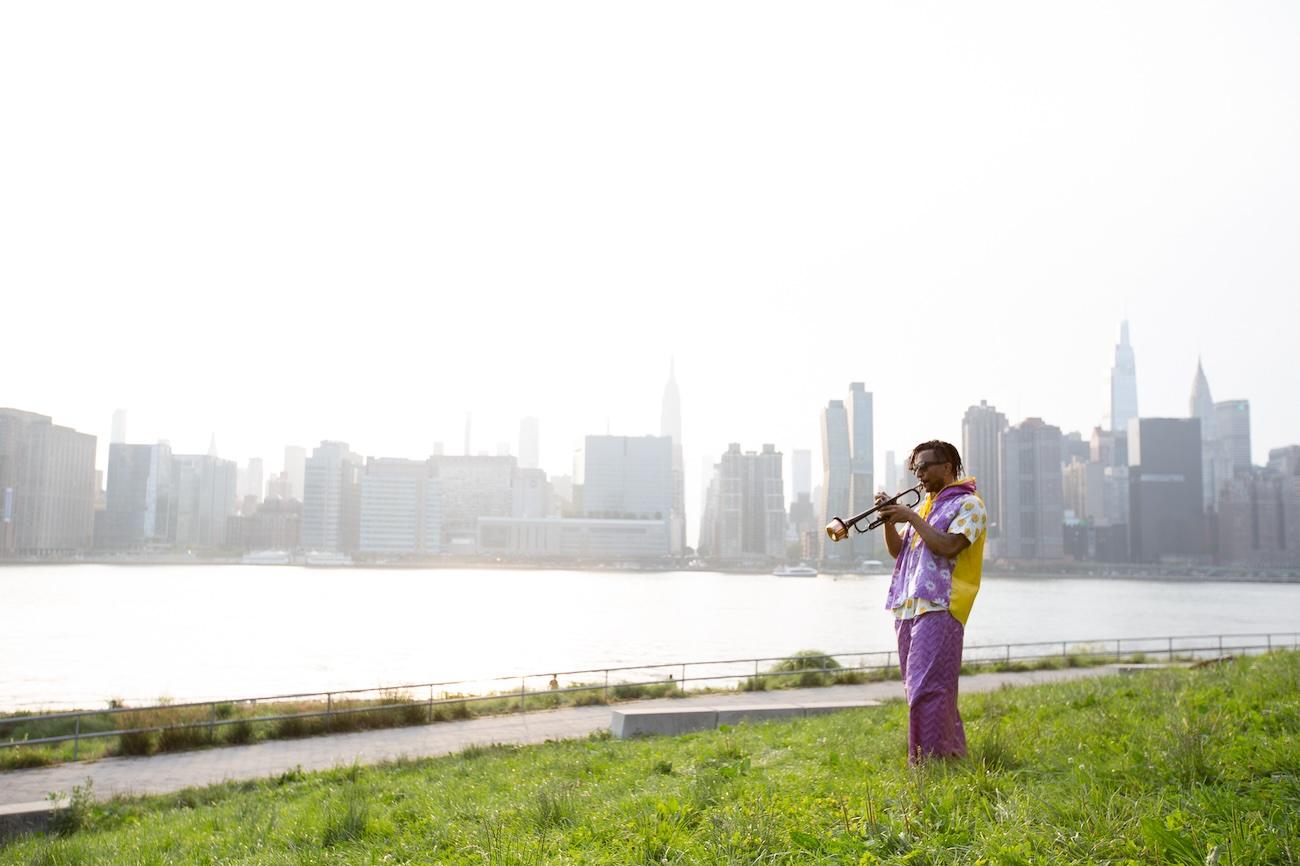
The titles of songs Strawberry Fields, Summertime, Strange Fruit, and Somewhere Over the Rainbow played by musician Justin Sterling throughout the hour-and-a-half performance mirror the alliteration of the choral call ‘Soft Sweet Sound.’ Inspired by the sound of the ocean hitting the sand and the soft whoosh imparted, this sound resonated with Lyn-Kee-Chow in the softness of blankets. Aptly, the rich, bright green grass popping up in the gaps between where each rounded corner of the picnic blankets join reiterates this softness.
Additionally, the lines of the opening chorus “There’s no going back, Time is ticking on the…” underscore the importance of presence and the impending future in this iteration. With the next generation in mind, Lyn-Kee-Chow cast the youngest three of her collaborators in central roles including two exuberant master of ceremonies orators, actor and poet Fitzmore Codogan who co-wrote some of the narrative and artist Trasonia Abbott who brought their improvisation talents to the table, as well as interdisciplinary performance artist Hsiao-Chu Hsia (Julia) whose delightfully uncanny movement work incorporating the ringing of a bell (inspired by the ring of a dinner bell) imbued the piece with a strange yet hopeful whimsy.
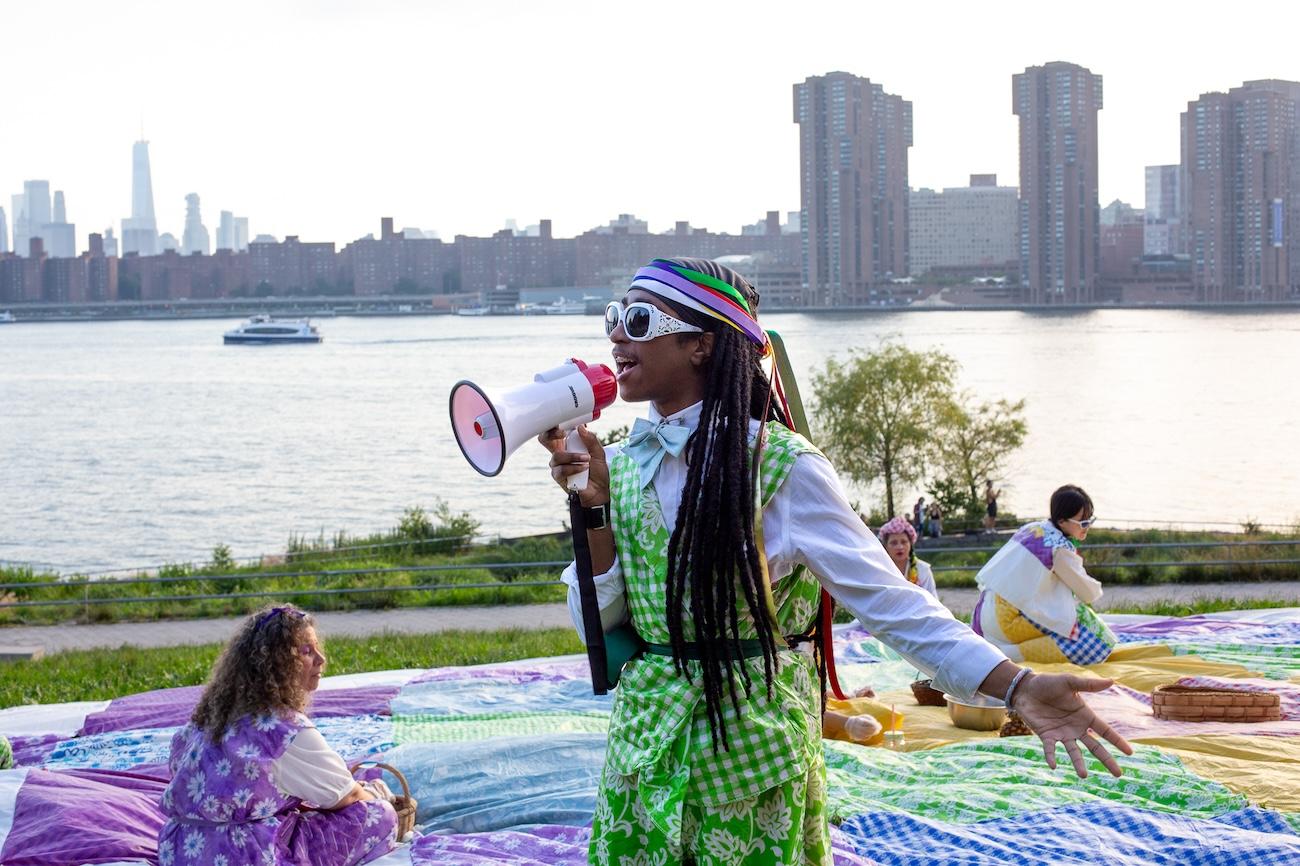

At one point, Lyn-Kee-Chow raised two watermelons high above her head, signaling a sense of sacred importance. In a conversation after the performance, Lyn-Kee-Chow acknowledged the symbolic power of food and the maternal nuances of her role, such as the notion of feeding her children but also to the symbolism of the watermelon in the context of the ongoing terror in Gaza. She contemplated her more silent role in the work as part of the older generation and the significance of the younger members’ roles, “I’m here, in giving them a voice and have the audience walk away thinking about the future. Thinking about time, thinking about the grounds that we’re on, thinking about how they evolved, and maybe becoming a more fruitful future.”
While these ephemeral performances have taken their bow, Shared Grounds will be on view through August 10, 2025 (map here) via traces of the performances left behind at each site, along with a banner featuring a QR code linking to an expansion of the works and the research that informed them. Through these strategies, the exhibition embraces not only a critical reimagining of shared grounds but also the capacity to envision exhibitions and artistic practices that center collective community, both humans and non-humans, through dialogue, joy, play, and curiosity rather than the obsession with commodity, ownership, and monetary value that continues to oversaturate and overdetermine popular engagement with art and its mutable definition.
You Might Also Like
Jamie Martinez: The Shadow of Colonialism
Body Spirit Geology: Women Artists Working with Metaphysical Presence
What's Your Reaction?
A.E. Chapman is an independent curator, writer, teaching artist, and facilitator based in New York City. In addition to her curatorial and writing pursuits, Chapman works with Access and Community Programs at the Museum of Modern Art.

